What is it?
This is CUPRA’s hybrid Formentor. It comes with 245PS and 400NM of torque. It has an electric range of 34 miles, does 0-60 in 7 seconds and has a top speed of 130mph. It is powered by a 1.4-litre TSI engine mated with a 12.8 (usable) kWh capacity Lithium-ion battery. Transmission is in the form of a 6-speed automatic in the version we have here and it is CUPRA’s Magnetic Grey colour with Black Leather and copper stitching upholstery. We’ll provide the full specification at the end of the review.
We loved the petrol 310 model giving it our highest review score so far. Read on to find out what we thought of the e-Hybrid.
Verdict
The Formentor e-HYBRID looks great and is well kitted out. In terms of performance, it promises the best of both worlds, but sadly the hybrid setup provides a compromise we couldn’t live with day-to-day. If you can, we strongly suggest buying the petrol or diesel models instead.
What we liked
- Formentor’s striking looks
- Standard equipment
- Comfortable ride
What we didn’t like
- Brakes feel wishy-washy
- Laggy and uninspiring power delivery
- Touch controls for climate frustrate
Exterior
The VZ2 we are reviewing here comes with 19″ “Exclusive” machined sport matte black wheels. These are the same wheels that were fitted to the 310HP petrol version of the CUPRA Formentor we reviewed, which was also a VZ2.

In fact, the exterior of both versions is identical apart from the exhaust pipes, with the e-Hybrid featuring fake exhaust pipes. I think car manufacturers are weaning us off cars having fake exhaust pipes on hybrids and thankfully CUPRA has dropped the exhaust fakery from the new all-electric CUPRA Born.
The only other visual difference is the electric charging cover situated just in front of the front passenger door.
There is no point in repeating a full description of the exterior here as you can check that out in the petrol VZ2 review, first let’s look at the fake exhausts close up. What do you think? let us know in the comments.

One thing I noticed which I thought was a nice touch was the FORMENTOR lettering in the rear lights. It’s the only external model name you’ll find on the car.

The Formentor is certainly a stylish car and I know from our vibrant Formentor community that the car turns heads. It certainly did when we drove the first one on UK roads back in October last year. However, I didn’t spot one person take a second look at this one, I wonder if it was due to the colour.

Now I’ve spent a lot more time with the Formentor and taken a lot more photos I think it looks a lot better from certain angles. I think the front and front quarter (see picture above) looks really striking. Also, the rear looks good too (even with the exhaust fakery).

I think the side profile is the least exciting. Don’t get me wrong, it looks good, but the front and rear are significantly more interesting. I still pine for the red brake calipers from CUPRA models from SEAT (although my Ibiza CUPRA has them so she’s a keeper).

The car comes with 19″ Wheels as standard, CUPRA brakes and this one had Bridgestone Turanza 245/40 R19 tyres.

The rear wheel arch has the “flange” (that’s not an official name from CUPRA, but its what I’m calling it). These first appeared on the MK3 CUPRA Leons as far as I am aware, but in the form of plastic fixed to the inside of the wheel arch. More recent generation SEAT and CUPRA models now have the “flange” built into the wheel arch itself. This is something to do with the wheels not being allowed to protrude too far from the arch so these “flanges” technically mean there is a piece of bodywork that sticks out further. That’s my understanding anyway but please correct me in the comments if I’m wrong.
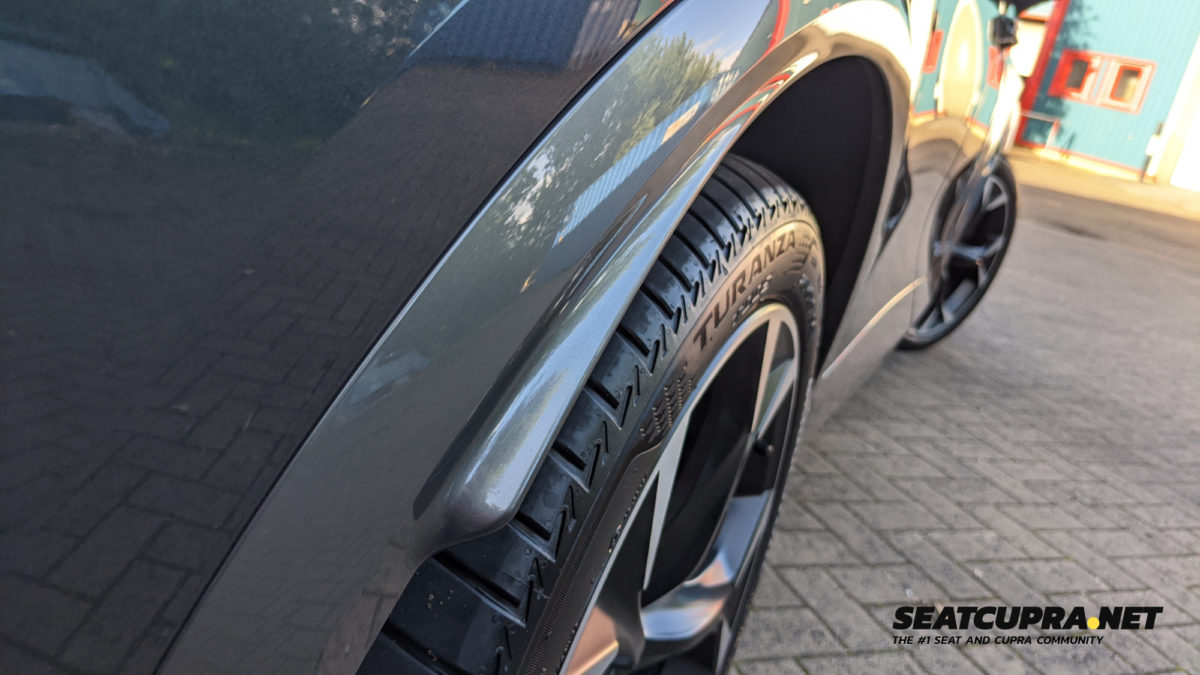
The Formentor has a deep rear spoiler which has a triangular gloss black piece that joins it to the window.
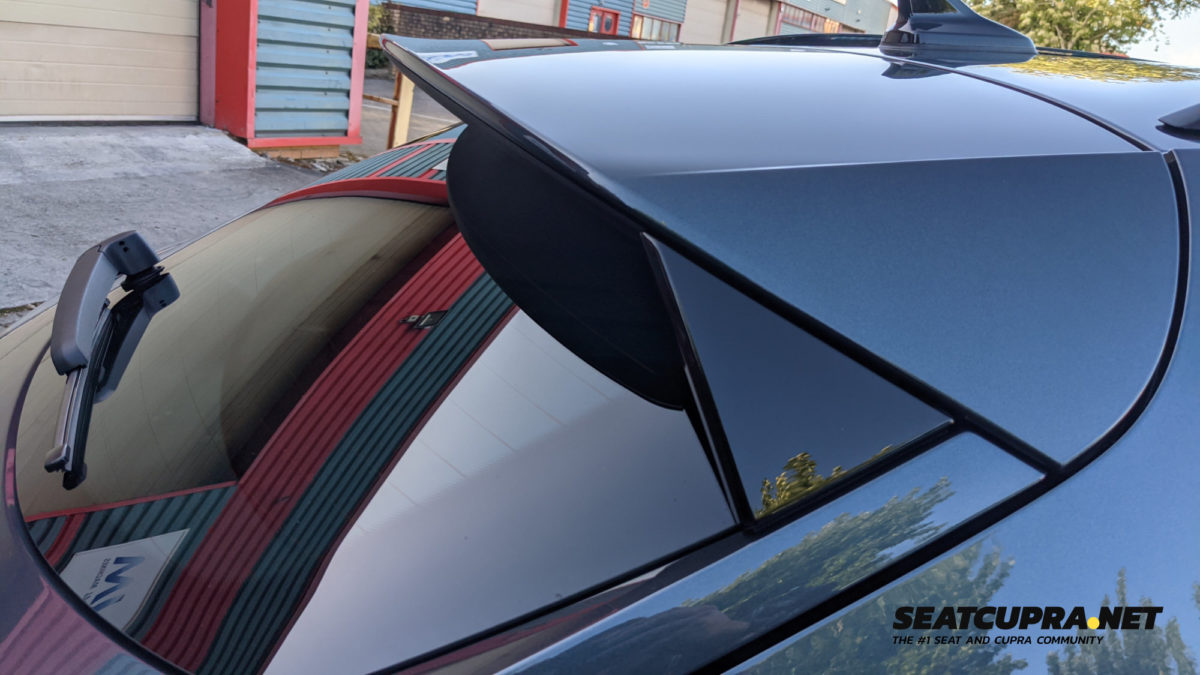
The rear full LED light shapes are good looking and high enough that the car doesn’t need a window mounted rear brake light.
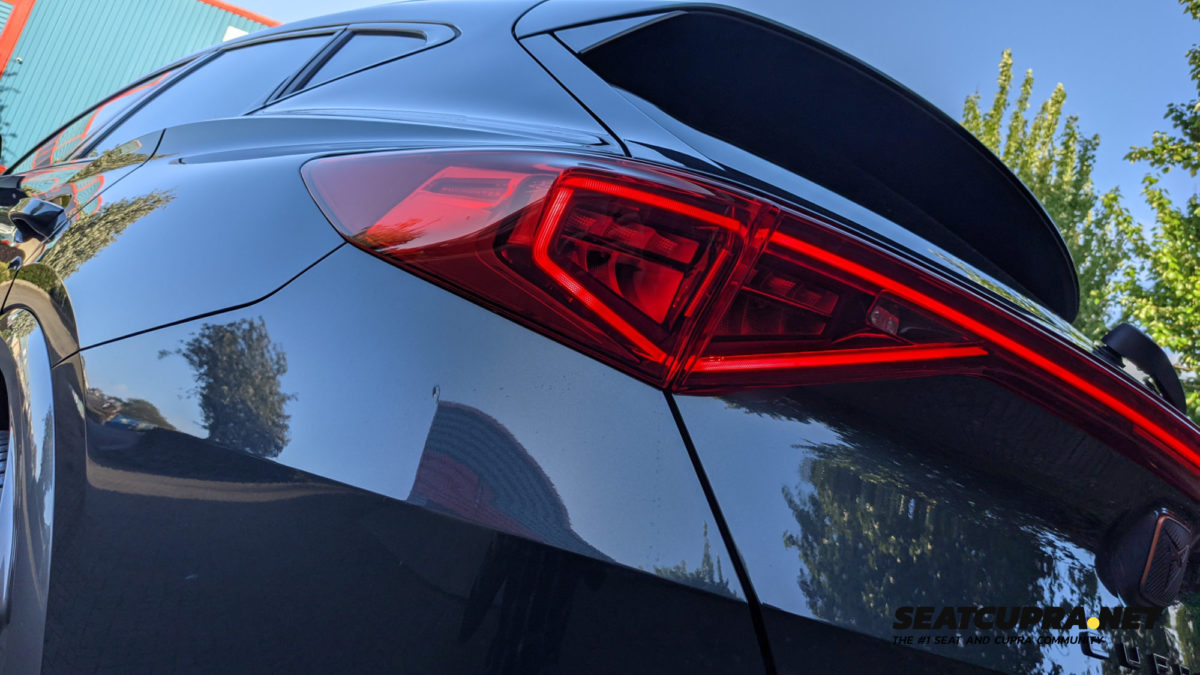
Interior
At the risk of sounding lazy, the interior is identical to the petrol VZ2 we reviewed as well.
The cabin has plenty of space and in terms of getting in and out of the car the height feels just right, not too high and not too low. People with bad backs will probably find this better than a full height SUV or lower estate to get in and out of.

Leather bucket seats support the driver and front passenger and the cabin has the cool wrap around lighting that changes colour. The interior door trim lights also act as your vehicle passing indicators as seen on the CUPRA Leon as well.

This model has the steering wheel buttons for starting and stopping the engine as well as the drive mode button. Holding down the CUPRA button will automatically put the car in CUPRA mode instead of having to cycle through the options.
The cabin is very comfortable to sit in with good visibility. Some people (my wife included) aren’t fans of being able to see the bonnet from the driving seat, which does take a bit of getting used to. It made me think the car was longer than it was when parking (thank goodness for front parking sensors as standard!).

The car has the now-standard digital dash which has lots of display options, which on the eHybrid I found to be pretty overwhelming as you have extra information due to the dual-motor specification. I’m sure with more time I’d get more used to it, but it certainly has a bit of information overload when you are driving!
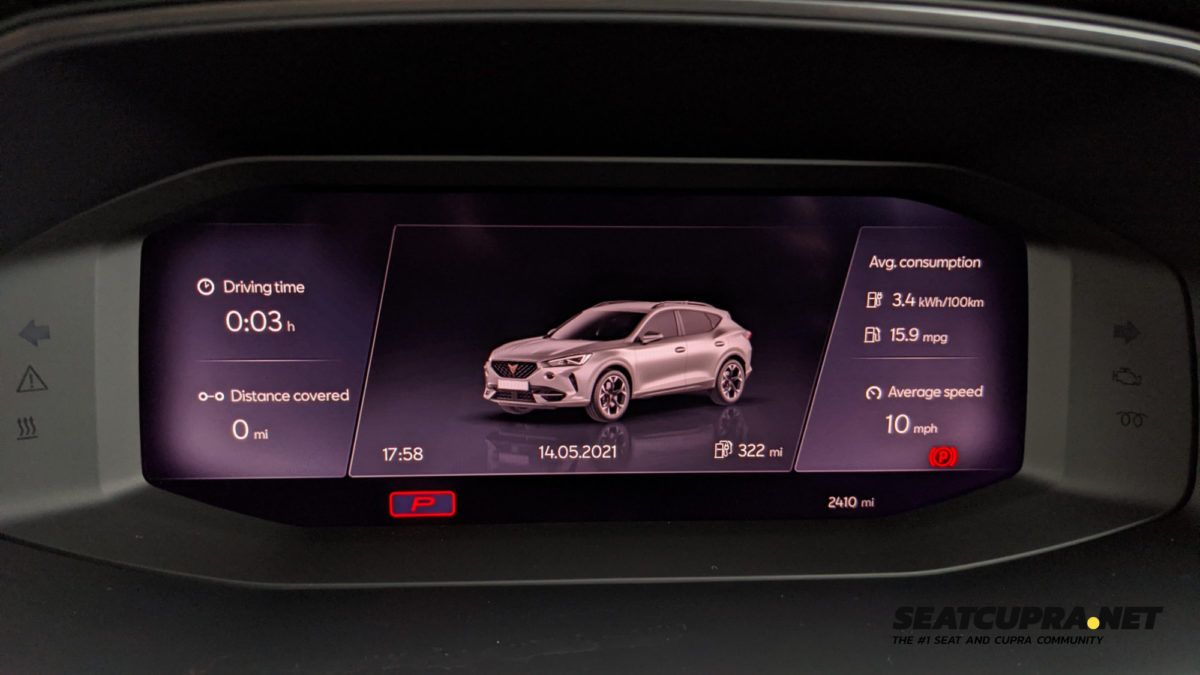
The dash trim itself is high quality and I didn’t find any creaks in the press car we had.
I’m not going to talk about the infotainment screen as we’ve covered that in-depth previously. Some of our members in the Formentor forums have been reporting problems with the software being quite buggy but improving over time with updates.
I had a couple of issues with the car. Firstly the key-less entry didn’t work a few times despite me having the key in my hand. Secondly, the traffic sign recognition thought the motorway I was joining had a 120MHP speed limit. Good job the car wasn’t fully self-driving or that could have got interesting!
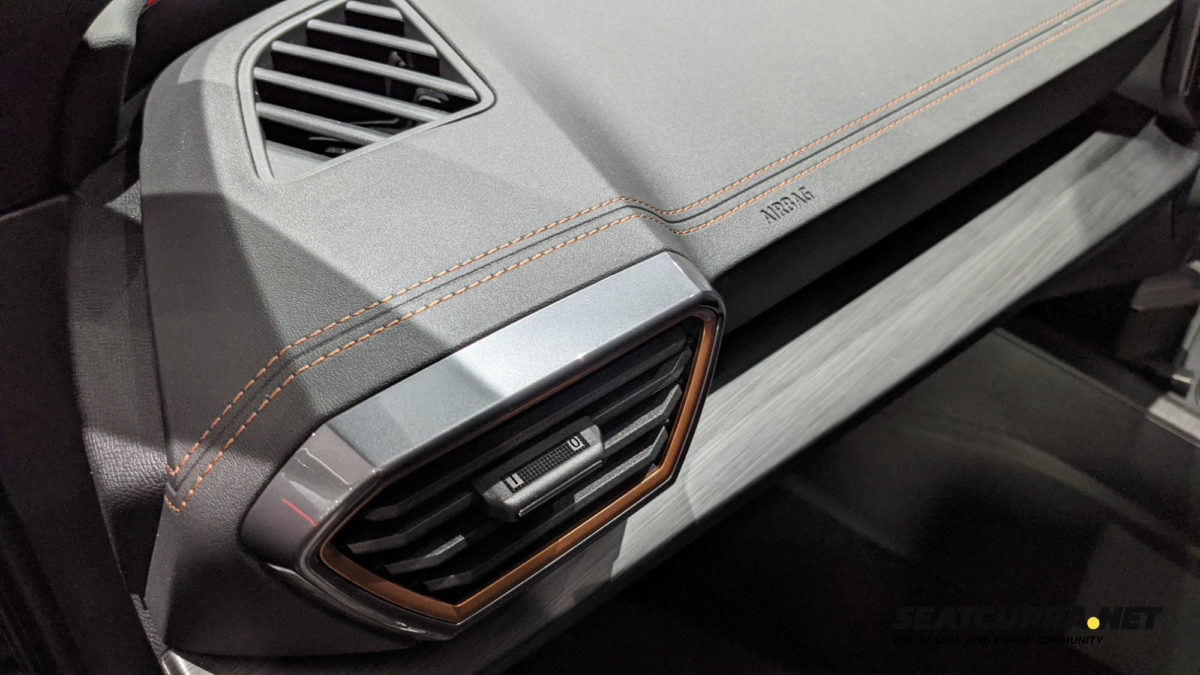
I used to be envious when I first saw door sill lighting on a Ford Focus ST years back. I’m glad to see CUPRA are fitting them as standard to their cars at the moment.
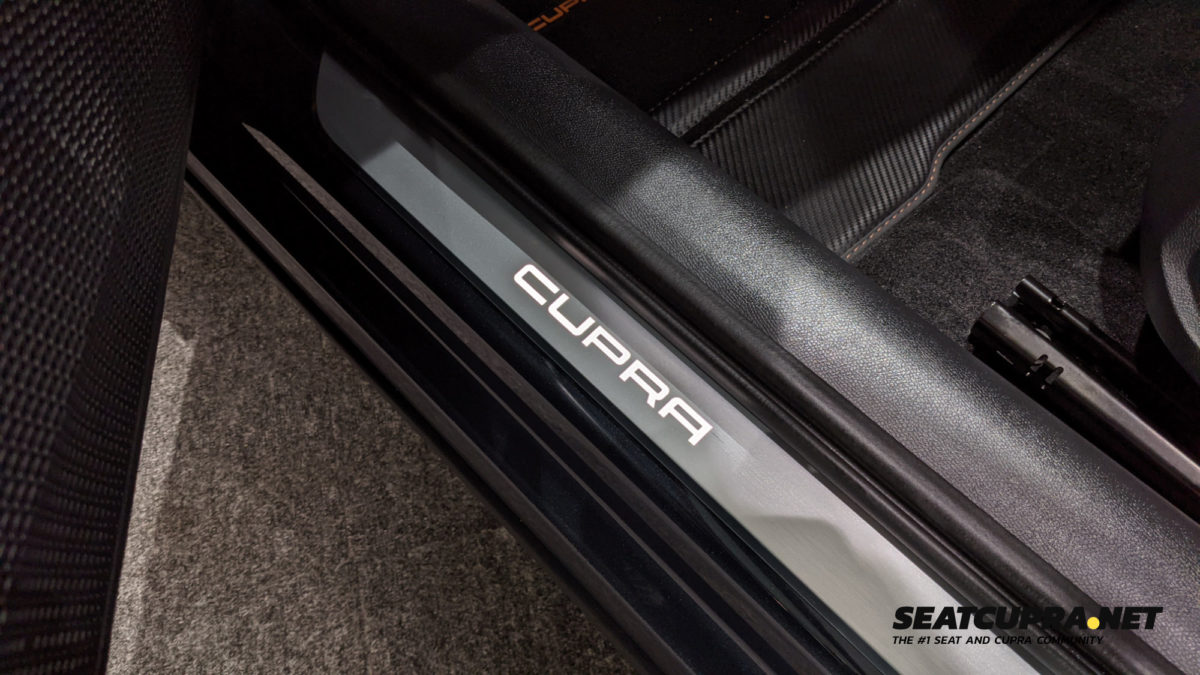
The bucket seats are very comfortable and supportive. There wasn’t any sign of wear. I still wish CUPRA offered an Alcantra option though. Better wearing, better grip and more comfortable in my experience.
The rear legroom is good. The wife sat in the back on one trip as our son likes to sit in the front and she was so low down when I looked in the mirror it was like I had a toddler in the back (and she’s not that small!). The seats are comfortable but lean back quite far so shorter people might not have great visibility out the front.

Here’s the rear legroom for reference. The front seat is adjusted for my driving position. I’m 5′ 10″.

The boot capacity is compromised on this model. The petrol version has a 420 litre capacity whereas the Formentor e-Hybrid has 345. So take this into account if you are thinking about this car. It’s still a good size, but don’t get caught out.
You can see the car also comes with the charging cable.
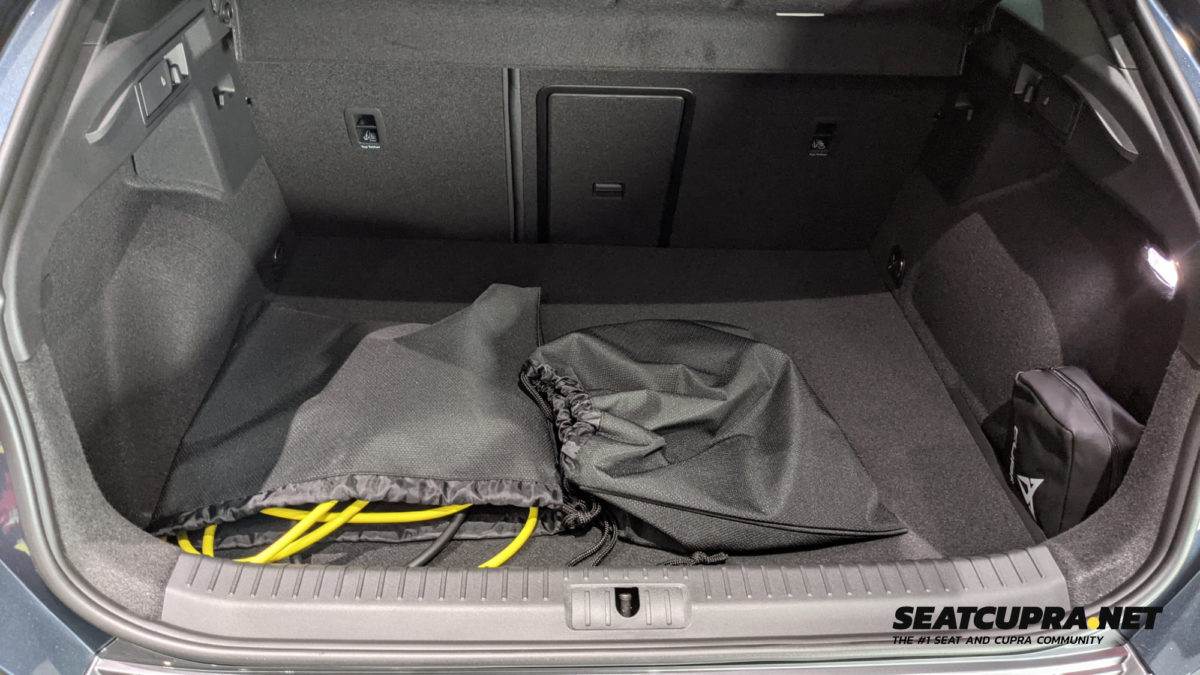
Overall the interior held no surprises. It is comfortable, of good quality and with good ergonomics for the driver, except the lack of physical buttons for the heating controls which also don’t light up. You didn’t think we’d forgotten to complain about this again did you?!
Driving and performance
So far so good then. Well, here’s where things aren’t so great.
I wanted to love the Formentor in e-Hybrid form, but it just didn’t hit the mark for me as a driver’s car. I’d go so far as to strip its CUPRA badge from it if I could.
What? That’s harsh surely?! It’s a CUPRA in looks only.

It’s a CUPRA in looks only.

When I first drove the car I didn’t realise the courier had left the car in electric-only mode so when I joined the motorway and floored the accelerator I was thinking, what the hell’s going on!
After about 15 mins on the motorway and being very frustrated at the lack of grunt when overtaking I realised the error of my ways and turned the car back to Hybrid mode.
I was still disappointed. There was a noticeable lag and just a feeling of disconnection and unresponsiveness. It’s hard to describe without feeling it for yourself.
Sadly, when driving on twisty roads it didn’t get much better.
You really feel the compromise between an underpowered tiny range electric power and a petrol engine that suffers from the increased weight. The two just don’t gel and I found the drive underwhelming and at points frustrating.
The brakes also felt wishy-washy which was a surprise. I found myself having to press really hard when coming to a stop after the initial press wasn’t enough. It left me feeling even more disconnected to the car. I think this is due to the regenerative braking, but it takes away the confidence you are in full control. I didn’t find this on the full petrol model.
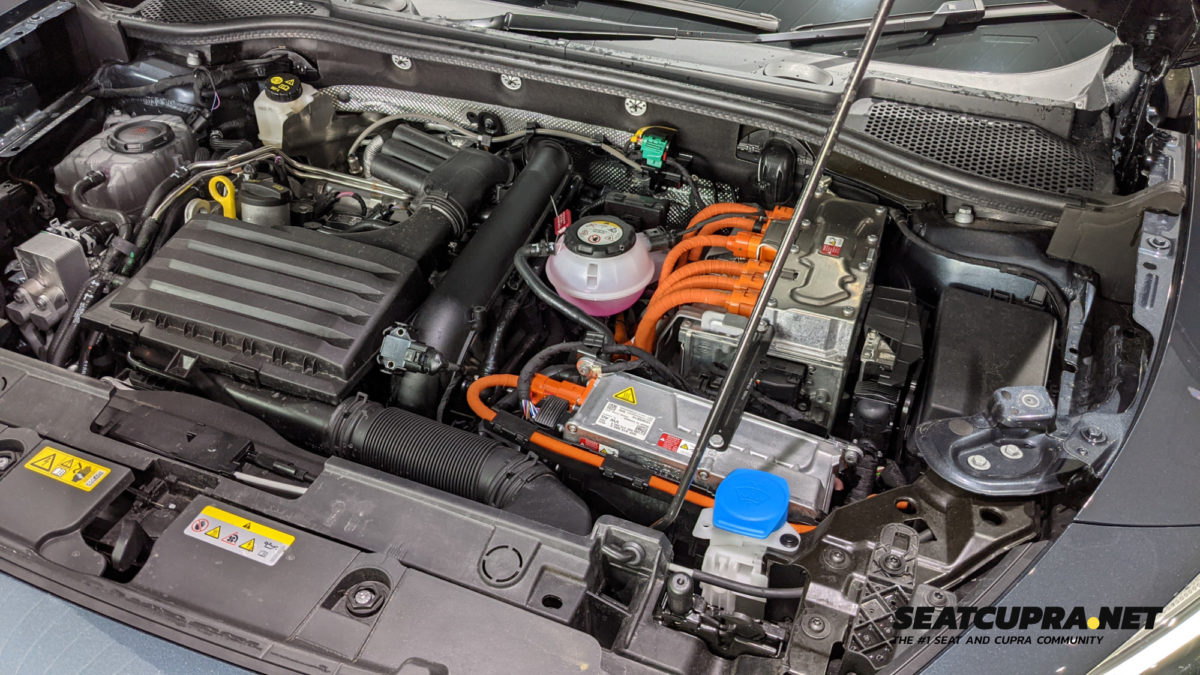
I can’t believe I’m writing this about a modern CUPRA model, as for years they have always had me hungry to get behind the wheel. However, I’m sorry to say I actually chose to take my IBIZA CUPRA on one of my trips to the shops and left the Formentor on the drive.

Last thoughts
I recommend avoiding the PHEV model unless you have a very specific need to get one. Take a petrol version if you can.
We’ve not driven the diesel models yet, but I’d take a stab they are more engaging than the PHEV which is the worst of both worlds, a shame.
I’m sure will these will eventually be forgotten when we see decent performing all-electric versions of future cars from CUPRA. For now, they had to hit targets for emissions in the range and this car fits a need in that regard.
We look forward to seeing how the smaller CUPRA Born fares in their first all electric model.
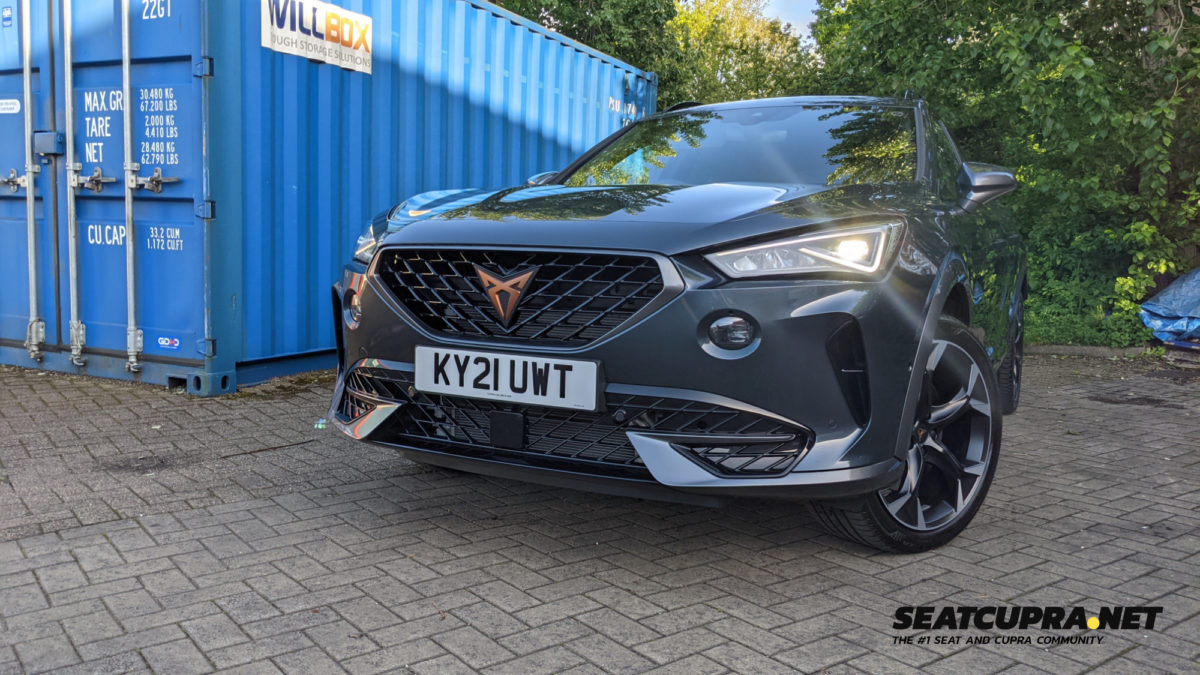
This car may be the right car for CUPRA fans looking to get a company car and the associated tax benefits, but sorry CUPRA, we think you missed the mark on this one for the real driving enthusiasts. Luckily you nailed it on the head with the 310HP Petrol at least.
Specifications of the model in this review
| Key specifications | |
| Total Power | 245PS |
| Total Torque | 400Nm |
| Fuel economy (mpg) (WLTP) | 176.6-188.3 |
| Electric consumption (kWh/100km) | 15.7-16.1 |
| CO2 (WLTP) | 33g/km |
| Electric range (WLTP) | 34miles |
| Euro standard | RDE2 |
| 0-62 mph | 7.0 seconds |
| Top speed | 130mph |
| Battery | |
| Type | Lithium-ion |
| Capacity (kWh) | 12.8 (usable) |
| Max Power: kW / PS | 85 / 116 |
| Max. Torque: Nm | 330 |
| Charging time AC 2.3kW (10A) 0-100% | 05:00:00 |
| Charging time AC 3.6kw (16A) 0-100% | 03:33:00 |
| Engine | |
| Engine | 1.4-litre TSI |
| Transmission | 6-speed automatic |
| Max. Power: PS @ rpm | 150 @ 5000-6000 |
| Max. Torque: Nm @ rpm | 250 @ 1550-3500 |
| Dimensions (mm) | |
| Length | 4450 |
| Width (Inc. wing mirrors) | 1839 |
| Height | 1510 |
| Wheelbase | 2680 |
| Capacities (l) | |
| Boot space | 345 |
| Fuel tank | 40 |
| Weight (kg) | |
| Kerb weight | 1704 |
| Towing capacity with brake 8% | 1700 |
| Price | |
| Recommend Retail | £40,260 |
| Options | £0 |
| As tested | £40,260 |
| Benefit-in-kind rate | 10% |
| Insurance group | TBC |



